This article was co-authored by Duston Maynes. Duston Maynes is an Automotive Repair Specialist at RepairSmith. Duston specializes in leading a team that handles a variety of automotive repairs including replacing spark plugs, front and rear brake pads, fuel pumps, car batteries, alternators, timing belts, and starter motors. Duston holds an Associate’s degree in Automotive/Diesel Technology from The Universal Technical Institute of Arizona and is a Certified Diagnostic Technician and Automobile Mechanics Technician through BMW STEP. RepairSmith received The 2020 Big Innovation Award by Business Intelligence Group and The Startup of the Year by the American Business Awards. RepairSmith was also included in Built in LA’s 50 Startups to Watch and The Business Intelligence Group’s 52 Names Leading the Way in Customer Service. RepairSmith offers in-home services to provide car owners convenient and complete auto repair everywhere.
wikiHow marks an article as reader-approved once it receives enough positive feedback. This article received 12 testimonials and 90% of readers who voted found it helpful, earning it our reader-approved status.
This article has been viewed 688,221 times.
Full-service gas stations are increasingly scarce. Self-service can be quite a bit faster, and knowing how to fill your tank up properly can also help you save a bit of money, making it the most informed and speedy choice. You can learn to operate the pump, select the most appropriate variety of gasoline, and complete the process to get on your way quickly and safely. See Step 1 for more information.
Steps
Paying for Gas
-
1Pull up to any available pump. Pull up with your gas tank opening as close as possible to the pump, making sure you pull up on the correct side (your dashboard should feature an indicator displaying which side of your vehicle the tank is located on, if you aren't familiar). Since it's dangerous to pump gas with your car running, you need to turn off the ignition and get out of the car.[1]
- Make sure you're at the correct variety of pump. Some pumps are designated for Diesel vehicles only, while some pump regular gas only, and some pump both. Pumps that pump both kinds of gas will have two nozzles on each side.
- Practice good pump safety. Before you pull up to the pump, put out any cigarettes that might cause a fire hazard around the gas and leave your cellphone in the car. Cell static has been linked to several gas station flare-ups.
-
2Select your payment method and pay for your gas. You've got to pay for the gas before you select your variety of gas and pump it. You can pay with a credit or debit card directly at the pump, or with your card or cash at the counter inside.
- To pay at the pump, just slide your card to get started and follow the instructions. You'll likely have to select between debit/credit, and enter your PIN or your zip code to confirm payment. Some machines will prompt you to enter an amount. If you enter $20, the pump will cut off the gas when you've pumped $20 worth. If you want to fill your tank, just press enter to skip this step.
- To pre-pay inside, pay the attendant. You'll need to tell them how much gas you want to pay for, and the number of the pump at which you're parked. You can use either a card or cash. The cash amount you pay them will show up on the pump, which will cut off when you get to that amount. If you want to fill up your tank and pay in cash, you'll probably have to overpay, then pump your gas, and then return to the counter to get your change. This is common. Just tell the attendant you're going to try to fill it up, pay more than you think you'll need to pay, and go back to the counter for your change.
- If you're a member of any rewards or loyalty programs, insert your member card at this point (or prior to the credit/debit card; see the pump for instructions). This may net you a discount or add points to your balance at participating gas stations.
Advertisement -
3Remove the gas cap from your vehicle. To access the gas tank, you'll probably need to pop the door to the gas tank. Depending on your model, you might have to press a button inside to pop it, or just open it with your fingers and expose the gas cap. Unscrew the gas cap and set it somewhere safe, or let it hang if connected with a wire.[2]
-
4Remove the nozzle and insert it securely into the gas tank opening. On most machines, you need to remove the nozzle before the machine will allow you to select a variety of gas and start pumping. The safest way to do this is to remove the nozzle and immediately insert the nozzle into the gas port of your car, pushing it in until it sits snugly.
- If you see two nozzles at the gas pump, that means the pump supplies both diesel and regular. The Diesel nozzle is usually slightly larger and colored green, and the nozzle is usually too big to put into the port of a regular gas tank. Make sure you select the correct variety for your car--using the wrong kind of gas can ruin your engine.[3]
- Pump nozzles are made to fit into your gas tank without you holding onto the handle while you pump. While you'll likely see lots of people holding onto the pump the whole time, this is unnecessary. Just make sure you've inserted it in fully and snugly and it should be fine.
Selecting Gas
-
1Select an appropriate grade of gasoline. On most gas pumps, you'll be able to select between three grades of gasoline, based on their octane rating: regular (87), mid-grade (89), and premium gas (91-93). Depending on the branding of the gas station these grades may have different names, but the octane rating is mostly universal. To determine the most-appropriate octane for your vehicle, consult the owner's manual of your vehicle. For most vehicles, regular or mid-grade gasoline is perfectly appropriate and even preferable.
- The octane rating refers to the amount of gasoline that can be compressed during the compression stroke before the gas is ignited. Lower-octane gas will ignite earlier, and higher-octane will ignite later in the stroke. Higher-octane gasoline is traditionally used in high-performance engines to prevent knocking and create horsepower.
- Higher-octane fuel prevents as much dirt, silt, or carbon build-up from developing in your fuel filters.
-
2Make your selection by pressing the corresponding button on the pump. Each grade of gas will have a button you can press to select it. When you've made your decision based on octane-grade and price, select the variety of gas you'd like to use.
- On some older machines, there's a little seat on the bottom of the "holster" where the gas pump sits in the machine. Before you select a variety of gas and start pumping, you've got to flip it up. On newer digital machines, you're just doing this by pressing a button. Once you've activated the pump, you're ready to pick your gas and start pumping.
-
3Press start. After selecting the variety of gas you want to pump, you'll probably need to press the "Start" button on most pumps. This will activate the gas and prime the pump, which means you'll be ready to start pumping your gas whenever you're ready.
- Look at the dial on the pump to make sure it goes back to zero. This will indicate that the pump is ready to go, once you've made your selection. As you pump, you can watch to see how much volume of gas is being added and the price.
Pumping Gas
-
1Pull the trigger on the pump to activate the gasoline. Squeeze the trigger on the pump nozzle gently, allowing gasoline to flow out of the hose and into your fuel tank. On most pumps, you can lock the trigger to let the gas flow continuously and make it easier on your hand.
- All modern pumps now have self-stopping mechanisms that will cut off the flow of gasoline when the tank becomes full, or when you've reached the amount for which you've pre-paid, whichever happens first. You'll hear a click when the tank is full, or when the machine cuts it off.
-
2Consider cutting off the gas before completely filling the tank. There's some debate about the accuracy of the cut-off mechanism on some pumps. Some consumers believe that if you fill the tank to full, you're actually paying for more gas that flows back into the pump, unused. To avoid waste, keep your tank somewhere less than completely full.
- It's true that some stations have vapor recovery systems that feed back into the pump, used to recover gasoline, and also that gasoline expands some in the tank, making a super-full tank somewhat unnecessary and wasteful, both financially and environmentally.
-
3Remove and replace the nozzle. Let the trigger return to its starting place and remove the nozzle from the tank, letting any last drips fall in. Return the holster tab to the "down" position, if you raised it, and replace the nozzle into the pump.
- It's common for a small amount of gas to drip out of the nozzle as you remove it, so be careful to avoid getting it on your shoes and clothes. If you should spill any on the side of your car, or around the gas port, there are usually paper towels available at the side of the pump that you can use to clean up the spilled gasoline. It isn't necessarily dangerous, but can emit an odor.
-
4Recap your gas tank. Return the gas cap to its place and twist it closed until it clicks a few times, then close the door to the gas tank.
-
5Accept or decline a receipt. At this point, the gas pump will probably be beeping. You can print a receipt to complete the transition, or press "No" to reject it. Depending on the gas station and your method of payment, you may need to return to the shop to retrieve your receipt, if you want it.
Community Q&A
-
QuestionCan you pump your own gas in New Jersey?
 wikiHow Staff EditorThis answer was written by one of our trained team of researchers who validated it for accuracy and comprehensiveness.
wikiHow Staff EditorThis answer was written by one of our trained team of researchers who validated it for accuracy and comprehensiveness.
Staff Answer wikiHow Staff EditorStaff AnswerNo, it is still illegal to pump your own gas in New Jersey and it likely will be for the foreseeable future.
wikiHow Staff EditorStaff AnswerNo, it is still illegal to pump your own gas in New Jersey and it likely will be for the foreseeable future. -
QuestionCan you pump your own gas in Oregon?
 wikiHow Staff EditorThis answer was written by one of our trained team of researchers who validated it for accuracy and comprehensiveness.
wikiHow Staff EditorThis answer was written by one of our trained team of researchers who validated it for accuracy and comprehensiveness.
Staff Answer wikiHow Staff EditorStaff AnswerUp until recently, you couldn't pump your own gas anywhere in Oregon, but after a law that took effect in the beginning of 2018, now counties where the population is less than 40,000 people are allowed to have self-serve gas pumps.
wikiHow Staff EditorStaff AnswerUp until recently, you couldn't pump your own gas anywhere in Oregon, but after a law that took effect in the beginning of 2018, now counties where the population is less than 40,000 people are allowed to have self-serve gas pumps. -
QuestionWhat if I want to only fill my tank up halfway? Do I pull it out?
 Community AnswerWhen you've pumped however much gas you want, just stop holding down the handle on the pump. The gas will stop flowing at that point and you can then remove the pump from the tank and place it back in its holster.
Community AnswerWhen you've pumped however much gas you want, just stop holding down the handle on the pump. The gas will stop flowing at that point and you can then remove the pump from the tank and place it back in its holster.
Warnings
- Always extinguish your cigarette before you start to pump gasoline. If the flame comes in contact with gasoline fumes, it can cause an explosion.⧼thumbs_response⧽
- There are some US states, such as New Jersey and Oregon, where you are not allowed to pump your own gas at the gas station.[4] Make sure you find out what the rules are before travelling to another state.⧼thumbs_response⧽
References
- ↑ https://www.washingtonpost.com/archive/local/2000/09/14/a-safety-tip-thats-law-turn-off-car-at-the-pump/149d0524-60db-4965-b324-94f679242ce7/
- ↑ https://www.dmv.org/travel/gas-in-america.php
- ↑ http://mentalfloss.com/article/92463/heres-why-confusing-diesel-gas-pump-problem
- ↑ https://www.npr.org/2022/04/20/1093045172/you-havent-been-able-to-pump-own-gas-in-new-jersey-since-1949-that-might-change
About This Article
To pump your own gas, first pull up to an available pump and turn off your car. Some pumps are for Diesel vehicles only while others only pump regular gas, so double-check that you’re at the right type of pump. You can either pay at the pump using a debit or credit card or pre-pay inside the gas station with the attendant. If you pay inside, tell the attendant how much gas you want and what pump you’re parked at, then pay with cash or card. After paying, remove the gas cap from your vehicle. Remove the nozzle from the gas pump and insert it into the gas port of your car until it’s snug. Most pumps offer three grades of gas: regular, mid-grade, and premium. Regular or mid-grade gas is ideal for most vehicles, but check your owner’s manual if you’re not sure. Press the button below the grade of gas you want to select it. On some older gas pumps you’ll need to flip up the holster that the nozzle sits in to make a selection. You may also need to press a “start” button on the pump. Next, squeeze and hold the trigger on the nozzle handle to start pumping gas into your car. Most pumps have a small metal catch you can engage to lock the pump into place so you don’t have to hold it the entire time. The pump will automatically stop once your gas tank is full, or you can release the trigger to stop it earlier. When you’re finished, remove the nozzle and place it back in the pump. Twist the gas cap back into place. Finally, use the keypad on the pump to accept or decline your receipt. If you want to learn what sort of fuel grade to use for your vehicle, keep reading the article!
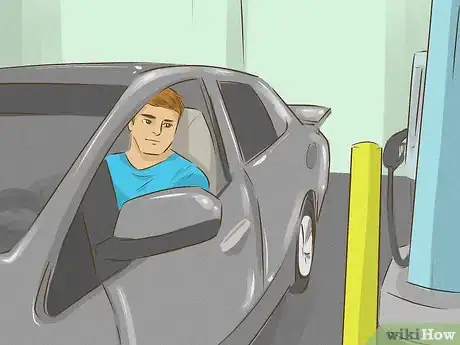
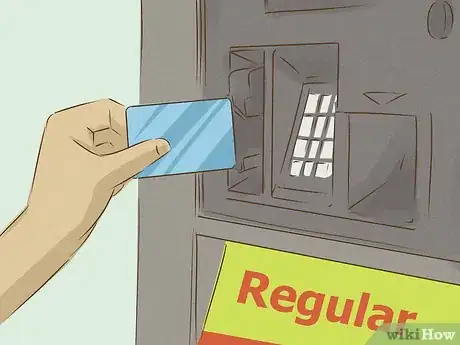
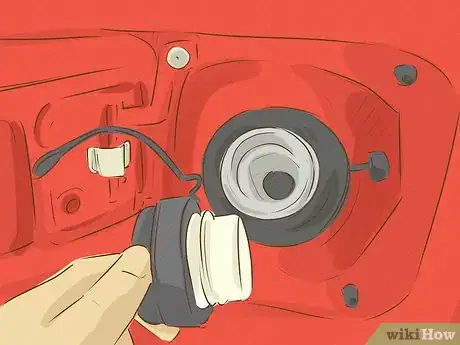
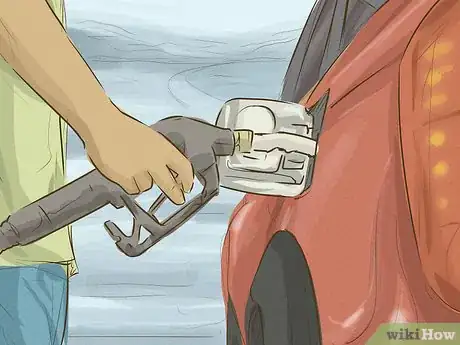


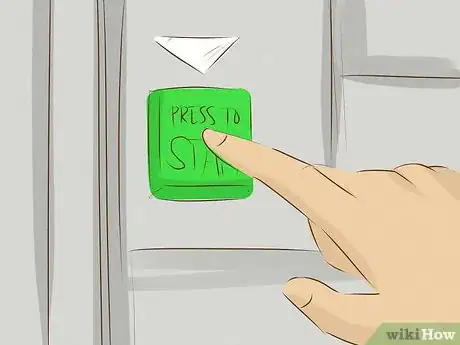
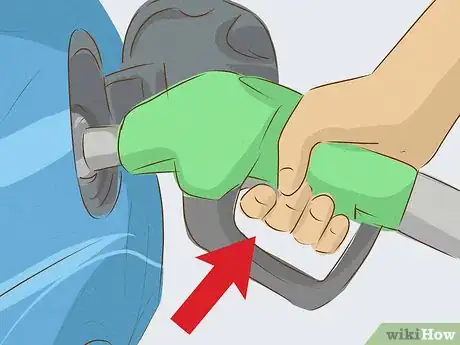

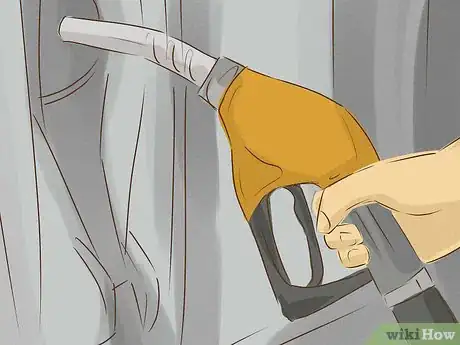


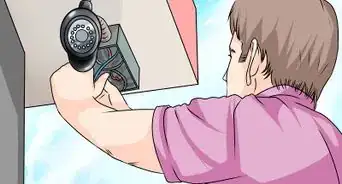

-Step-9-Version-2.webp)

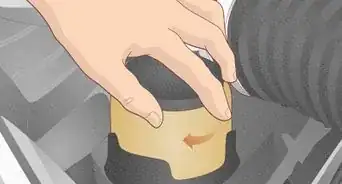
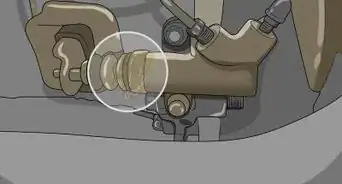

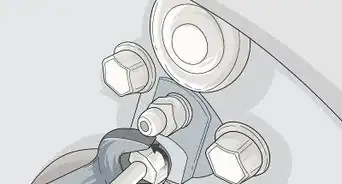










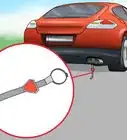
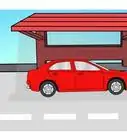
-Step-9-Version-2.webp)


































